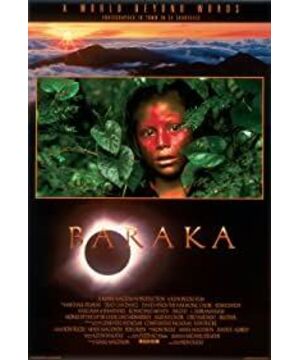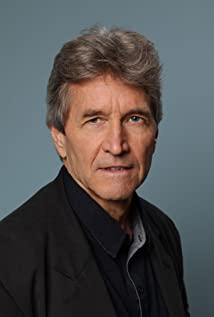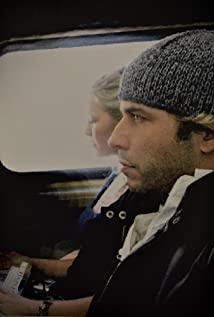Participated in the photography workshop organized by the group in 2017 and handed over the assignment to lindazhangds
Before the feature film begins, there is a title sequence, which we can consider as the sequence of the entire film. The opening scene was the Himalayas, which made me feel very cordial. The towering mountains remain silent, but witness the vicissitudes of life.
The first thing presented after the title is the temple. People prayed, danced, kissed silver locks, and prostrated themselves in worship. Religious temples are full of endless beliefs of human beings. The eye totem on the walls of the Swayambhu temple in Kathmandu, Nepal, reminds me of the little eye that is now on clothing. I especially like the scene at 9′50″ when the tribute lanterns appear in Lhasa Drokang Monastery. The camera is from near to far, the swaying flames are like people’s jumping wishes, the candlelight casts the silhouette of an old man, and the camera is tight Then jump to an elderly monk at Swayambhu.
The background music gradually changed from the original solemnity to some percussion music. At 13′24″, the soundtrack was replaced by the sound of human activities. Next is one of the pictures that left a deep impression on me: the Bali Kaikake dance scene, quite There is a bit of an awkward dance between two groups of people, and a little cute is a red flower on the man's ear. As the screen jumps to Mount Bromo in Java, Indonesia, the film is silent for a while.
Then, a loud and powerful drumbeat appeared, and then it returned to calm again, only to see the sea of clouds rolling up and hear the wind in nature.
The picture turns to the Kayabu people, who still retain the habits of primitive humans, they are naked, but who doesn't come to this world naked. In the Masai people of Kenya, people sit on the floor and do handicrafts, and some dance and sing, like some kind of celebration.
The Tiwi dances in the forest, and when the fork in their hands is poked to the ground, the picture jumps to the picture of Kenyan flamingos flying, and then transitions to the Iguazu Falls in Argentina. The waterfall presents a rainbow under the refraction of sunlight. There is a touch of tenderness and charm in the vast and magnificent.
This is followed by scenes of humans cutting down trees and falling mountains. Personally, I think this part shows the impact of human activities on nature.
33′40″ is the scene of the slums in Rio. The background music is like Chinese classical music, with stringed instruments added to match the camera image. It doesn’t feel depressed at all, but feels cheerful. The old man lying by the window, the children laughing on the street, These scenes make people feel very warm.
At the forty minutes of the film, the background music transitions from the sound of bells in the hands of the monks walking alone to the dense jingling music of 41′20″. What’s interesting is that the dense buildings and the endless stream of vehicles accelerate here, and the closer the camera angle is, the more The higher the arrival, the faster the picture speed. The crowd gathers and separates, like ants. Finally, the crowd on the elevator looks very similar to the eggs on the assembly line. The chickens from the chicken farm are swarming from the machine. When it slides down, it's a very cute part of the film, and the music is a bit naughty. The eight-minute acceleration is also impressive.
Next is the barren picture. The two overloaded donkeys are struggling to move forward, the scrawny people and animals in the landfill, the people sleeping under the overpass, and the tired begging children. Here, the camera speed is slowed down, and music is added to touch the heart. At this moment, the ordinary scenes such as the mother covering the child with the blanket, the husband riding the motorcycle with the wife, etc., are more tender.
The camera returns to the Wailing Wall in Jerusalem, Israel again. An Israeli soldier with a gun is looking up at the sky. The picture is transferred to the oil field fire in Kuwait. There are scenes of burning oil wells and smoke everywhere. A silent indictment of human cruelty. The next scene in Auschwitz is sombre and depressing.
What follows is like showing some origins of human civilization. Terracotta Warriors and Horses of the Qin Dynasty in China, the ruins of the capital city of the ancient Persian Empire in Iran, the pyramids in Egypt, and the Ganges in India, only the ruins of the former glory are left.
The picture returns to the sea of clouds, and the monks at Ryoan Temple in Japan are trying their best to ring the bell. At the moment when the bell strikes, the picture changes to the picture of the local Kenyan jumping up (80′30″), and then to the rotating ascetic monk in Istanbul. The temple of Charaku in Shiraz, Iran, the shiny buildings are very beautiful, just like a series of so-called romantic romances created by human beings, but these romances will eventually disappear in the arrogance and greed of human beings. The film ends with the vast galaxy. At the end, many unsolved problems of human beings are like galaxies, mysterious and unpredictable.
The whole film is beautiful, and every frame can be cut out as a postcard. When I watched it collectively for the first time, I didn't really feel anything other than the shock. In fact, it is not attentive. When I watched this documentary alone, I felt that it could both "heal" and "depress." Humans should be in awe of the majestic and silent nature of nature, but in the process of building up row upon row of buildings like steel forests, human beings have gradually lost the most frank part, from the Kuwait oil fire to the Auschwitz concentration camp. The segment is the scene I least want to recall in the entire film. Humans have created a brilliant industrial civilization, and at the same time opened the prelude to human cannibalism. Where human beings will go in the end remains a mystery.
View more about Baraka reviews








